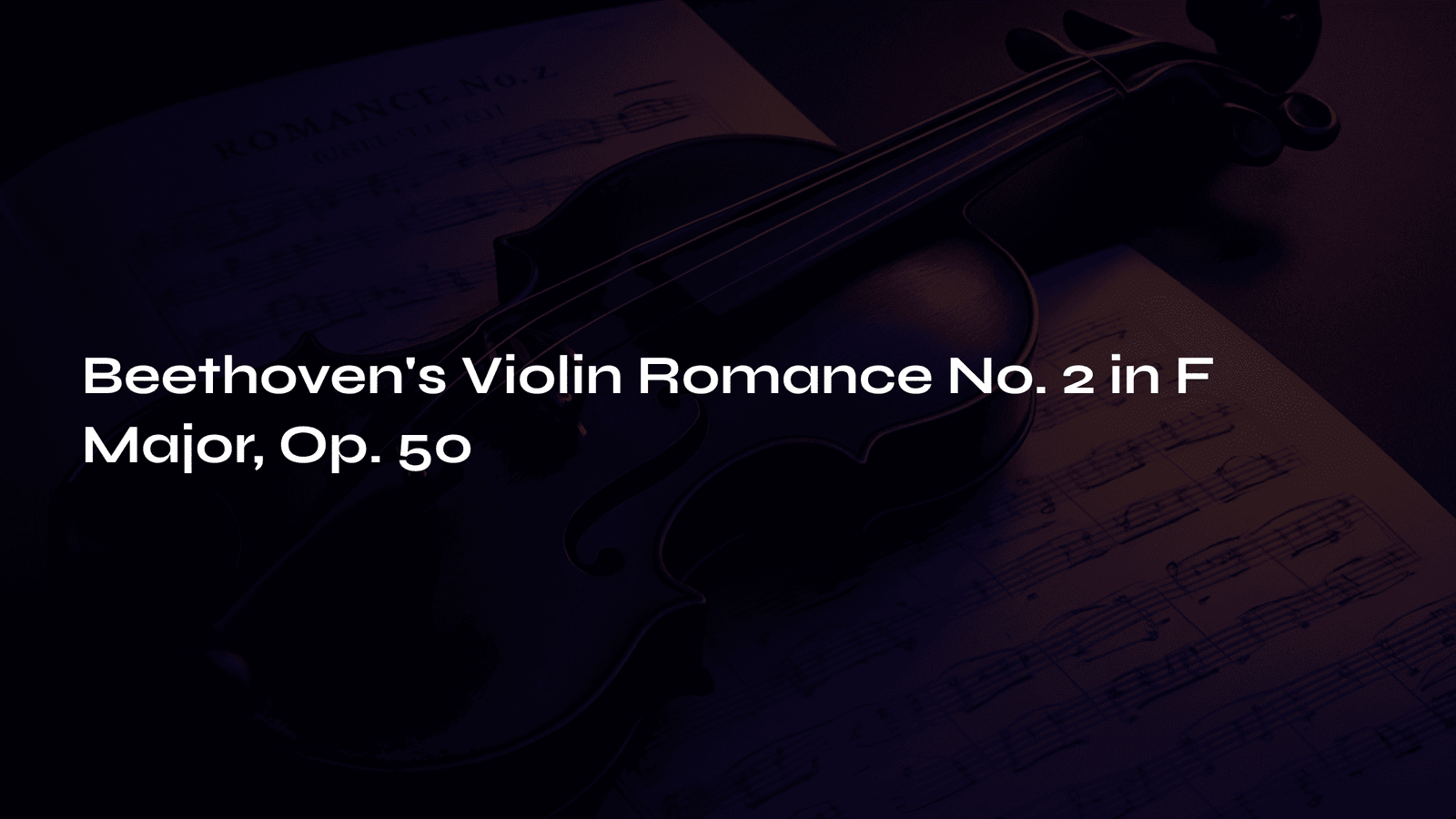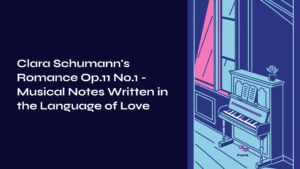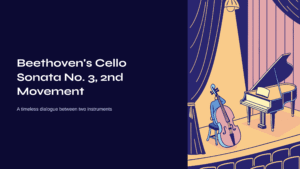Table of Contents
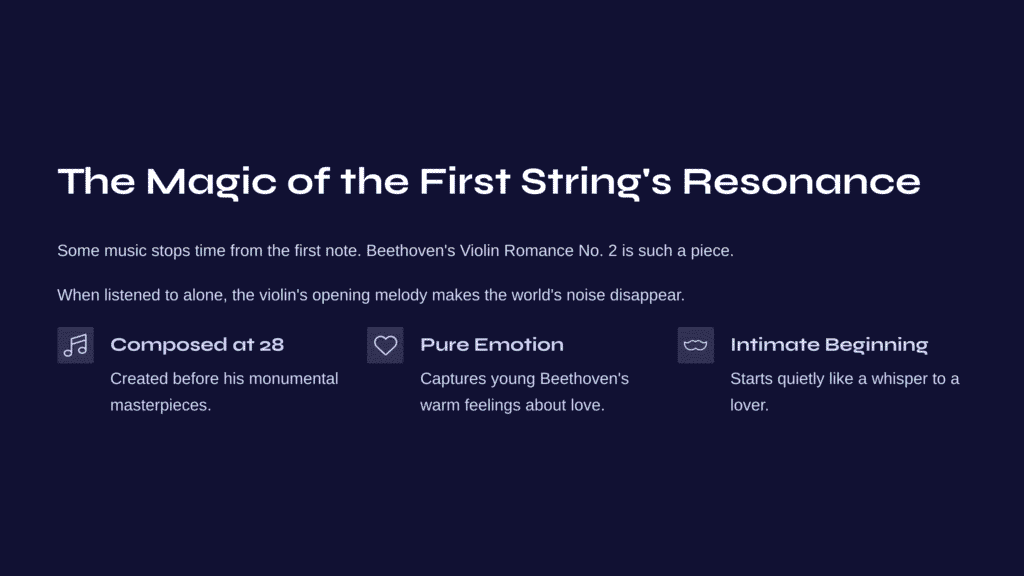
The Magic of the First String’s Resonance
Some music stops time from the very first note. Beethoven’s Violin Romance No. 2 is precisely such a piece. When sitting alone by the window on a quiet evening, listening to this composition, one suddenly feels transported to a concert hall in 1798 Vienna. The moment the violin’s opening melody flows forth, all the world’s noise disappears, leaving only that singular voice.
This work was composed when Beethoven was 28 years old, occupying a special place among his early compositions. Before the birth of monumental masterpieces like the Fate Symphony or Moonlight Sonata, young Beethoven’s pure and warm feelings about love are captured completely in this piece. Beginning quietly like a whisper to a lover, this melody awakens the longing that has been sleeping deep within the listener’s heart.
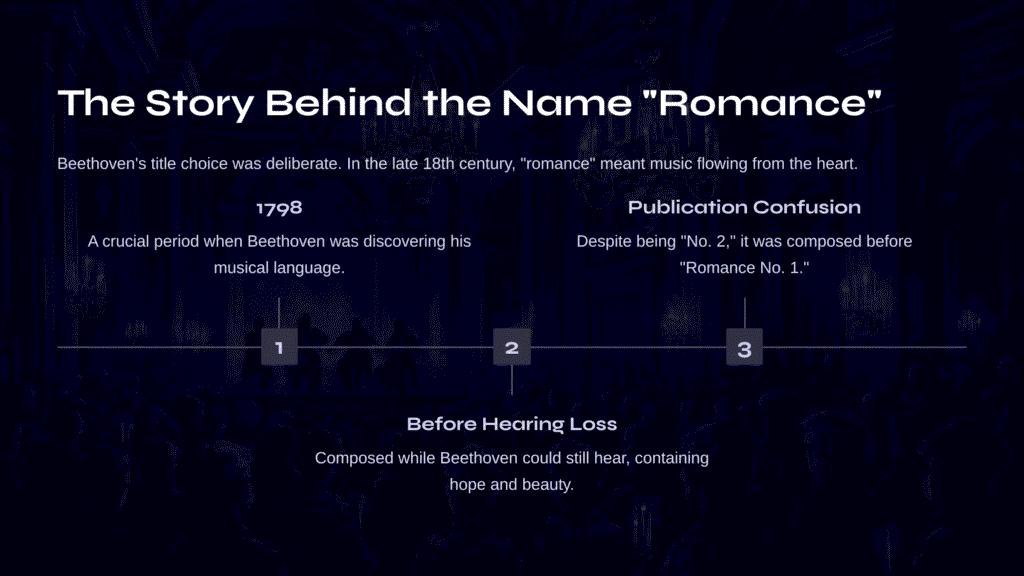
The Story Behind the Name “Romance”
Beethoven’s choice to title this piece “Romance” was no accident. In the late 18th century, romance meant not simply a love story, but music that flowed like a song from deep within the heart. It was neither the brilliant aria of opera nor the virtuosic melodies of concertos, but music crafted purely from emotion.
The year 1798, when this piece was born, was a crucial period for Beethoven. Six years after settling in Vienna, he had already completed the Piano Sonata “Pathétique” and was discovering his own musical language. However, this was still before he would face the devastating reality of losing his hearing, and thus this composition contains pure hope and faith in beauty.
Interestingly, while this piece bears the title “Romance No. 2,” it was actually composed before No. 1. This confusion arose from the publication process, but even such small anecdotes demonstrate how beloved this work was. Through a long journey that even the composer hadn’t anticipated, it finally reached us.
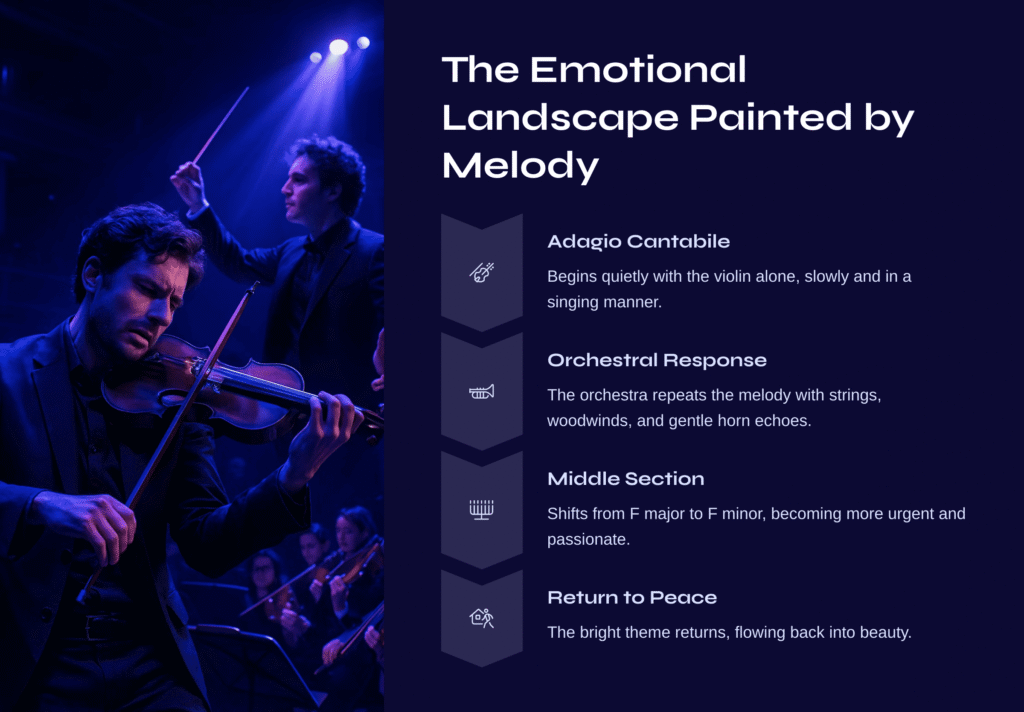
The Emotional Landscape Painted by Melody
The piece begins quietly with the violin alone. “Adagio cantabile” – slowly and in a singing manner. This marking alone reveals what Beethoven sought in this composition: not technical brilliance or flashiness, but a song that travels from heart to heart.
After the first theme is presented, the orchestra repeats the same melody. But this is no mere repetition. Above the harmonies created by the strings, woodwinds engage in dialogue while the horns add gentle echoes. It’s like a solitary murmur gaining the sympathy of many and becoming a greater resonance.
In the middle section, F major’s warmth temporarily shifts to F minor’s darkness. In this moment, the violin’s melody becomes more urgent and passionate. It’s like awakening from a happy dream to face reality’s loneliness. Yet this darkness doesn’t last long. Soon the bright theme returns, and everything flows back into peace and beauty.
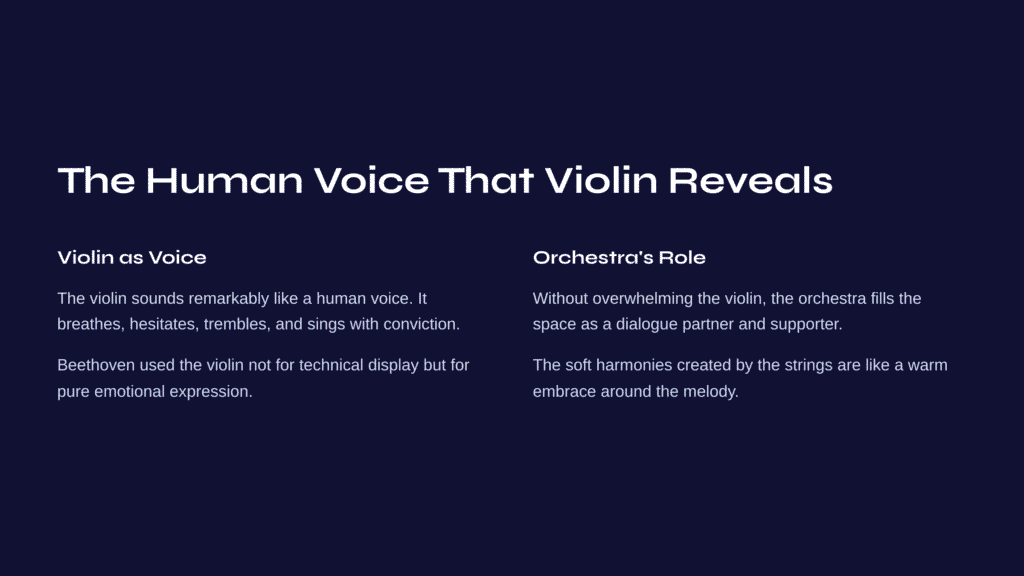
The Human Voice That Violin Reveals
The most remarkable aspect of listening to this piece is how the violin sounds exactly like a human voice. It breathes, hesitates, sometimes trembles, and sometimes sings with conviction. Beethoven understood every expressive possibility of the violin and used it not for technical display but as a tool for pure emotional expression.
The orchestra’s role is also exquisite. Without overwhelming the violin, it fills the space, sometimes becoming a dialogue partner, sometimes a reliable supporter. Particularly, the soft harmonies created by the strings are like a warm embrace enveloping the violin’s melody.
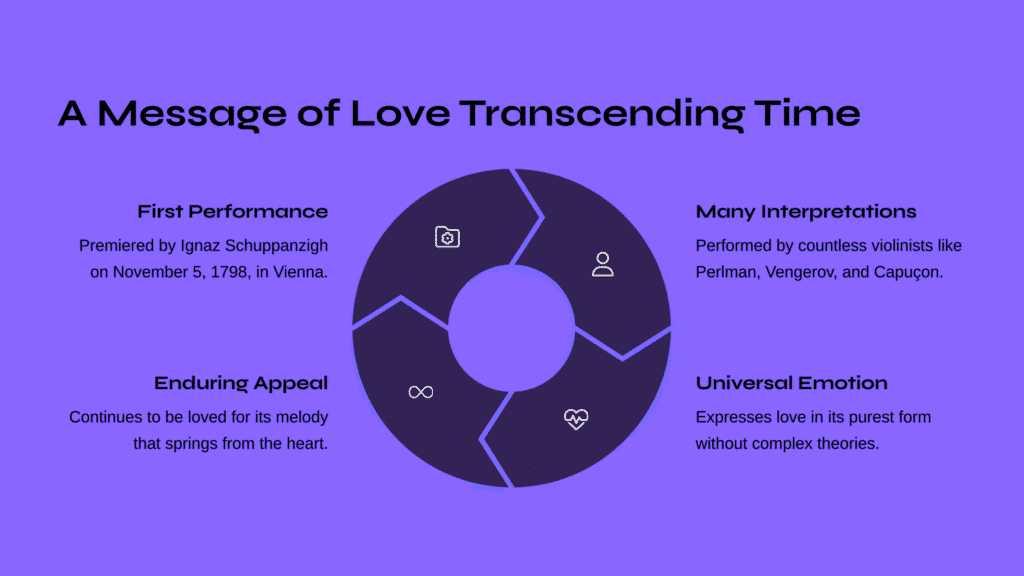
A Message of Love Transcending Time
The first performance of this work was given by violinist Ignaz Schuppanzigh, Beethoven’s friend. On November 5, 1798, in a Vienna concert hall, this beautiful melody first resonated in the world. What must those people in that concert hall have felt? Surely the same emotion we experience when listening to this piece today.
Time has passed, and countless performers have played this work. Perlman, Vengerov, Capuçon… Each interpreted the piece in their own way, but all shared a common element: the desire to convey the pure and truthful emotion this piece contains.
The reason this work continues to be loved is simple. It expresses love – humanity’s most basic and universal emotion – in its purest form. Without complex theories or brilliant techniques, it speaks everything through melody that springs from the heart alone.
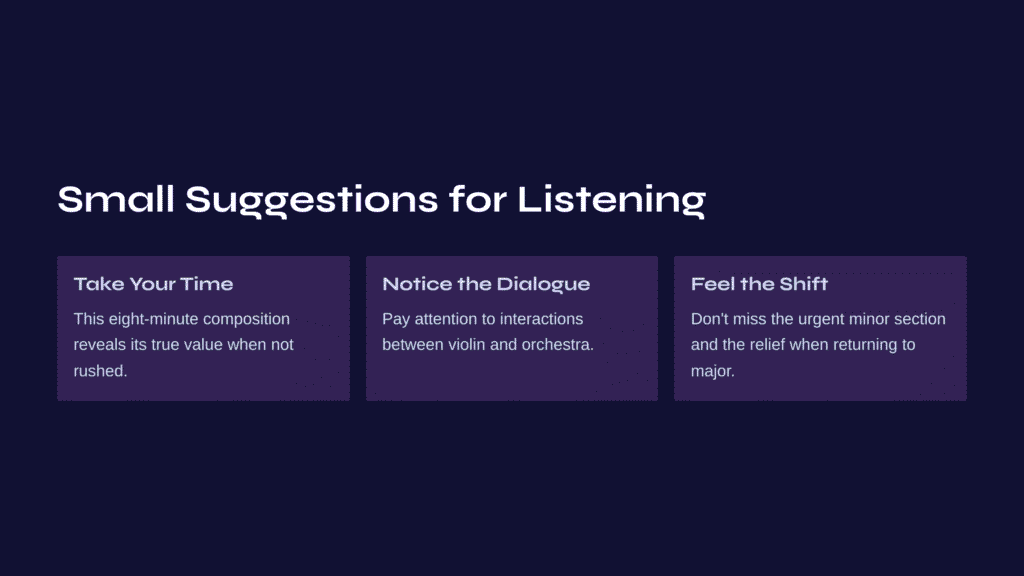
Small Suggestions for Listening
When listening to this piece, it’s best to take time without rushing. This composition of just over eight minutes cannot reveal its true value if hurried. From when the violin sounds its first note until the final resonance fades, listen without missing any moment.
Pay particular attention to the dialogue between violin and orchestra. Feel the subtle color changes between when the violin sings alone and when it’s with the orchestra. Like the difference between soliloquy and conversation, each offers different emotional depths.
Don’t miss the moment when the piece shifts to minor in the middle section. If you can sense how urgent the violin’s melody becomes in this part, and how great the relief is when it returns to major, you’ll encounter this piece’s true beauty.
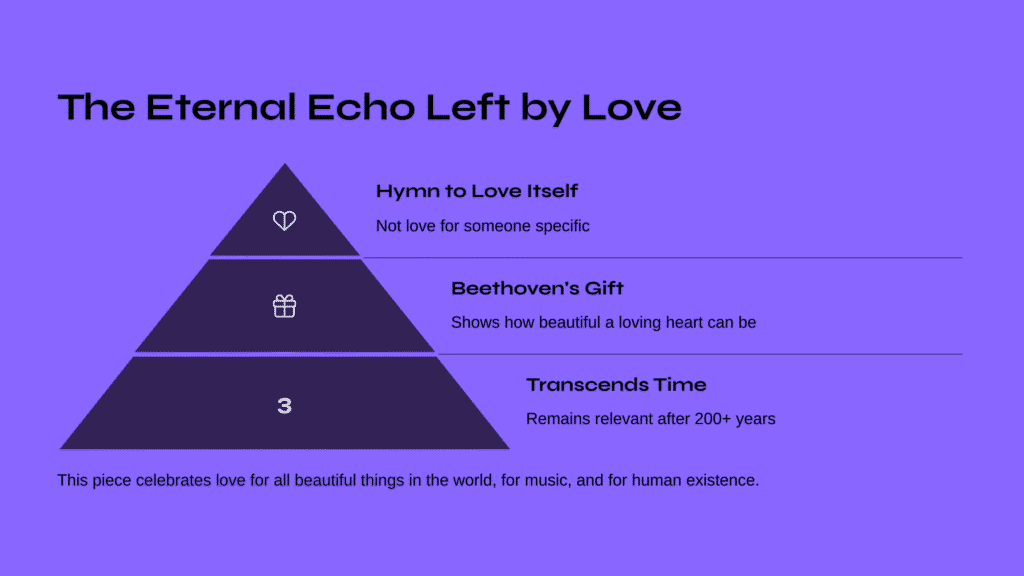
The Eternal Echo Left by Love
Beethoven’s Romance No. 2 is a piece about love. But not love for someone specific – it’s a hymn to love itself. Love for all beautiful things in the world, love for music, and love for human existence blend into one.
Listening to this piece, we receive the most precious gift Beethoven left us: the realization of how beautiful a loving heart can be. If there’s something that doesn’t change with time, something that transcends everything, it would be exactly this kind of pure emotion of love.
That’s why this piece remains with us even after more than 200 years. And it will continue to be with us. As long as people have loving hearts, Beethoven’s beautiful romance will resonate eternally.
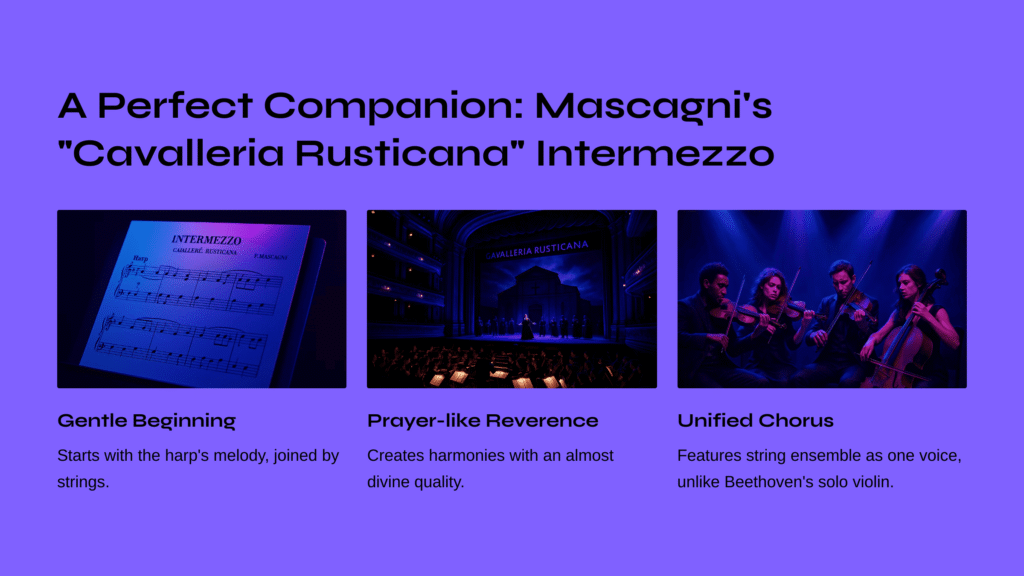
A Perfect Companion: Mascagni’s “Cavalleria Rusticana” Intermezzo
If the warm afterglow of Beethoven’s Romance still lingers, try listening to Mascagni’s “Cavalleria Rusticana” Intermezzo next. This piece, from a different era and genre than Beethoven’s Romance, conveys surprisingly similar emotions.
The intermezzo from this opera, premiered in 1890, depicts a moment of quiet meditation within the drama. Beginning with the harp’s gentle melody and joined one by one by the strings, the harmonies create an almost prayer-like reverence. If Beethoven’s Romance is a personal confession of love, Mascagni’s Intermezzo is like a hymn the human soul offers to the divine.
Both pieces share the quality of creating deep emotion through pure melody alone, without complex techniques or brilliant developments. If Beethoven’s Romance features the violin as one person’s voice, Mascagni’s Intermezzo presents the string ensemble as a unified chorus. Different beauties, yet both approach us with the same heart in demonstrating music’s healing power.
Beethoven’s classical balance and Mascagni’s romantic lyricism – listening to these two pieces consecutively allows you to feel music’s universal language that transcends eras.
